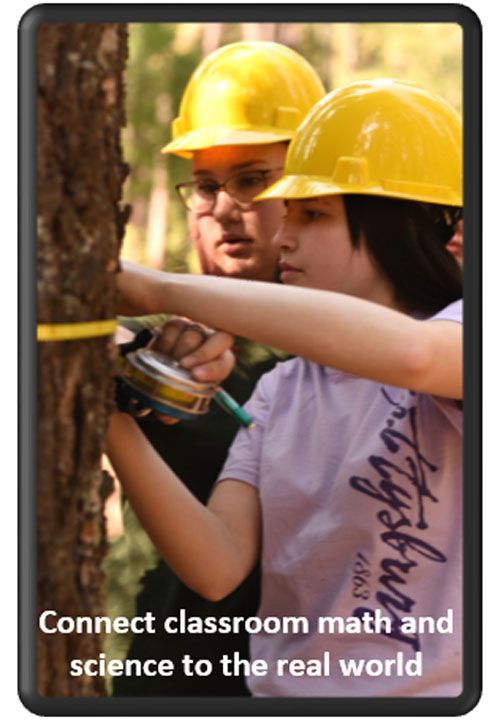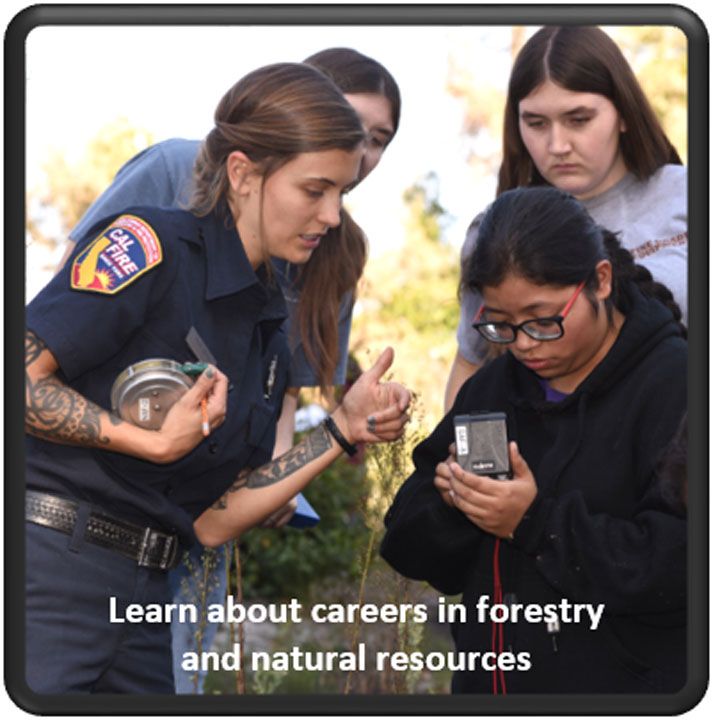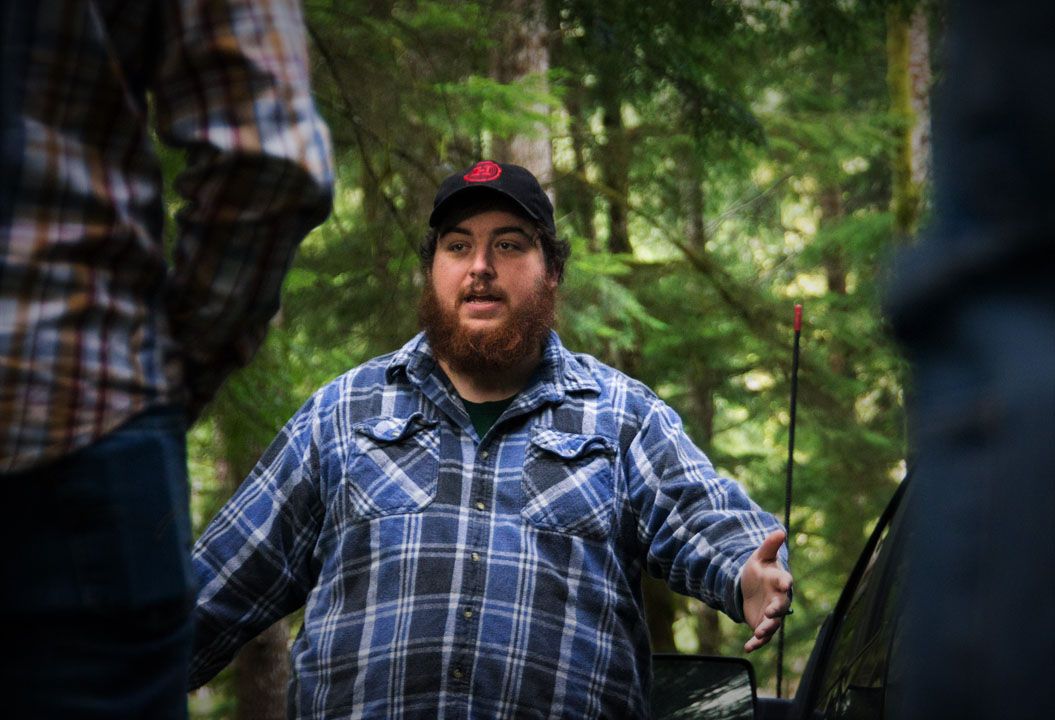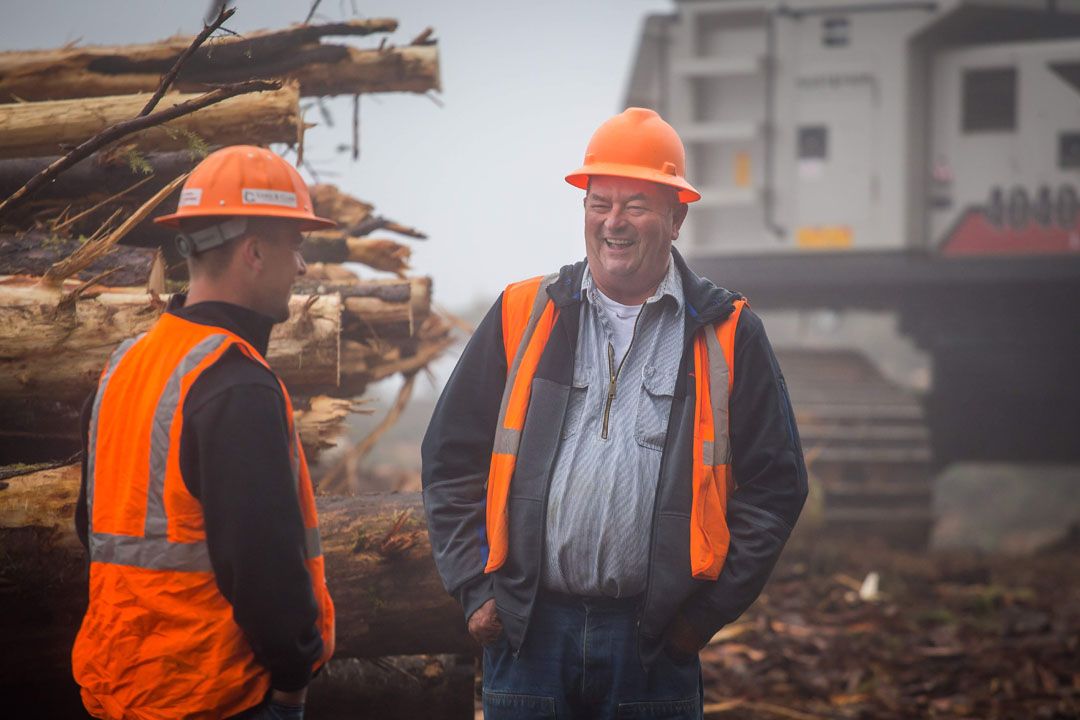Another Giant Gone: Gene Yahvah, 1926-2023
Gene Yahvah died in Libby, Montana on May 23, 2023, his ninety-seventh birthday. He was a legend among Montana foresters

Editor’s Note:
We have long been supporters of educational programs that encourage young men and women to pursue careers in forestry, logging or the myriad aspects of forest products manufacturing.
Here we pair two essays, the first featuring California Challenge, a program developed and spearheaded by Diane Dealey Neill, and the second featuring a young woman and two young men who are pursuing careers with the Portland based Hampton Lumber Company.
Our personal experience with these programs is rooted in our involvement in This is My Office, a video short produced in 2007 by the Pacific Logging Congress. It targeted teachers and students in vocational schools and programs and was designed to encourage teens to consider careers in forestry and logging.
Years earlier, we were big fans of a marvelous 28-minute film titled A Day in the Woods With Dave Burwell. The late Mr. Burwell was a marvelously disarming forester with Rosboro Lumber in Eugene. Oregon.
The film was captivating because it favorably engaged long-aired students then on the University of Oregon. Unfortunately, the timber industry’s grand poohbahs of that era were too cheap to fund its airing so it was never aired after premier at the old Western Forestry Center in Portland. Not much has changed.
Jim Petersen
Forestry Challenge: Forestry Education for High School Students in California
The Forestry Challenge is an academic event for high school students in technical forestry and current forestry topics. Participants spend four days in the forest learning about the ecology and management of the forested landscapes that provide communities with water, recreational opportunities, wood products, and wildlife habitat. Youth benefit by better understanding the relationship of the forested environment to their community, by exposure to natural resource management as a potential career option, and by undertaking a rigorous critical thinking exercise which is timely and addresses current forestry topics such as wildfire, insects, and forest health.
Since the Forestry Challenge began in 2003, the program has expanded from one event to five, throughout California. There are four events each Fall, as well as a Championship event in the Spring.
The goals of the program are:
Through Forestry Challenge, students gain scientific knowledge and learn practical skills involved in environmental stewardship, as well as understand the complexities of balancing social, environmental and economic values. Participants who may have never set foot in a forest environment have an increased appreciation for the woods and a desire to incorporate outdoor activities into their lives. They are also more likely to choose a career path in natural resources and attend college. Students participate as a team representing their school and learn important lessons of cooperation, teamwork and public speaking.
At Forestry Challenge events, students participate in the following:
Field Training: Forestry professionals spend time with the students familiarizing them with common tree species, forestry tools, and the use of identification keys. This training serves as a review of the “learning objectives” and associated resources available on the website.
Field Test: Working as a 2 to 5-person team, students complete a comprehensive field test, which includes identifying and measuring trees, analyzing stand data, and making forest management decisions. The scores from the testing stations are combined and become 60% of the team’s final score.
Focus Topic Fieldtrip: Students are presented with a current focus topic and visit the site of a case study to ask questions and collect data. They use the information they collect to weigh in on the topic, often influencing the decisions made about managing the forest in the future. Focus topics in 2015 included community wildfire protection, mobile app development, even-aged plantation management, and forest inventory.
Presentation: Guided by two consultation sessions with a Registered Professional Forester, students use all available information to put together a 15-minute presentation. A panel of three judges scores the presentation, which is worth 40% of the final event score. Top teams have given these presentations to the CA Board of Forestry, the CA Licensed Foresters Association, and the Forest Landowners of CA.
Be sure to visit the Forestry Challenge website for more information.



The Next Generation of Foresters Looks to Sustain One of Oregon’s Oldest Industries
By Steve Zika, CEO, Hampton Lumber
The forester profession has deep roots, spanning across many generations, cultures and demographics. While it has a long history in the Pacific Northwest, the industry has evolved over time, optimized its technologies, and adapted practices to modernize itself and meet the demands of shifting markets. Today’s young forsters are integrating science, stewardship, and economics to help landowners make smart decisions and sustain the resource for generations to come. Hampton is proud to employ and do business with a number of young foresters who are helping to shape the future of modern forestry. I recently sat down with Jacob Vail, Kat Olson and David Dougherty, three young foresters for Northwest timberland owners, to discuss their roles in the industry.

Jacob grew up in Skagit County, Washington and got his forestry degree from the University of Idaho. After graduating in 2014, Jacob started working at Hampton Lumber in January 2015, where he now helps manage the company’s forestlands near Knappa, Oregon - forestlands that help supply Hampton’s sawmill in the nearby coastal town of Warrenton. Jacob is the fourth generation of his family to work in the woods. His dad still works as a log truck operator and transports logs nearly every day to another Hampton sawmill in Darrington, Washington.
Kat, who was hired on at GreenWood Resources upon graduating from Oregon State University in 2010, has been involved in the forestry industry for nearly 13 years, beginning with an internship at the Oregon Department of Forestry. Her coworker, David started with GreenWood as an intern in 2011. Today, Kat and David help manage GreenWood’s Lewis & Clark Timberlands along Oregon’s north coast.
Kat’s love of forestry was instilled from a young age as the daughter of a professional forester. Raised on a small farm, Kat frequently camped, hiked and backpacked on local forestlands, so her decision to pursue forestry came as a natural extension of her existing lifestyle.
While an outdoor enthusiastic, growing up David knew very little about the working forests that surrounded his hometown of Seaside, Oregon. In contrast to the wild areas David loved, timberlands with active harvest areas seemed unsightly and careless. Intrigued by the prospect of a career in the woods, David took a forest management class in college and found himself hooked. “I began to realize that modern forestry is guided by science and grounded by stringent rules and regulation,” David remembers. He also discovered the breadth of values inherent in forests. “I’d always appreciated the habitat and recreational values forests provide--now I appreciate the value these forests have to surrounding communities and the local economy.”
All three foresters note they feel a kindred spirit among colleagues – many of the industry’s younger foresters have similar educational backgrounds (a large portion coming from OSU’s forestry program), as well as a mutual respect for one another having chosen the same path.

They often talk in the break-rooms about their day-to-day activities, which can range anywhere from managing the planting of over two million tree seedlings, to residing in the office, creating management plans and setting up projects that will eventually be transitioned to local road builders, loggers, and a variety of other contractors. David, Kat and Jacob stress that there is simply no average day-in-the-life of a forester, which is exactly why they love the job so much.
Modern forestry has changed with the science, adopted new practices, and incorporated safer and more sustainable tools. Although working in the forest sector for several years has taught these three the ins and outs of the space, they are often reminded that public perception is much different than the one they have come to hold themselves.
When asked about the most common misconceptions they hear, Jacob, David and Kat all shared the same stereotype: that timber companies don’t care about the environment or the habitat that forests provide. At the end of the day, they want people to understand that this could not be further from the truth. “All foresters choose this line of work for the opposite reason,” says Kat. “They are passionate about forests.” Jacob agrees. “We also live here,” he says. “We care about local wildlife, water quality, and the overall quality of life in our communities.”

The Pacific Northwest is one of the best places in the world to grow trees sustainably and global demand for renewable wood products grows year after year, particularly as advancements in wood technology, like cross-laminated timber (CLT), mean that forest products are on the cutting edge of greener and more sustainable urban development. So, for young foresters, it’s a source of pride that they are producing the high-quality materials that people need and keeping forestlands forested to support their communities long-term.
Despite some of the challenges that inevitably come with working on private timberlands, all three of these young foresters could not be more confident that they’ve chosen the right path. They’re making a tangible impact on the world by creating the programs that keep forestry modern and sustainable in a time when the environment is at the forefront of public opinion. Kat sums it up perfectly with one simple phrase: “For a forester, every day is Earth Day”.
You 100% tax-deductible subscription allows us to continue providing science-based forestry information with the goal of ensuring healthy forests forever.